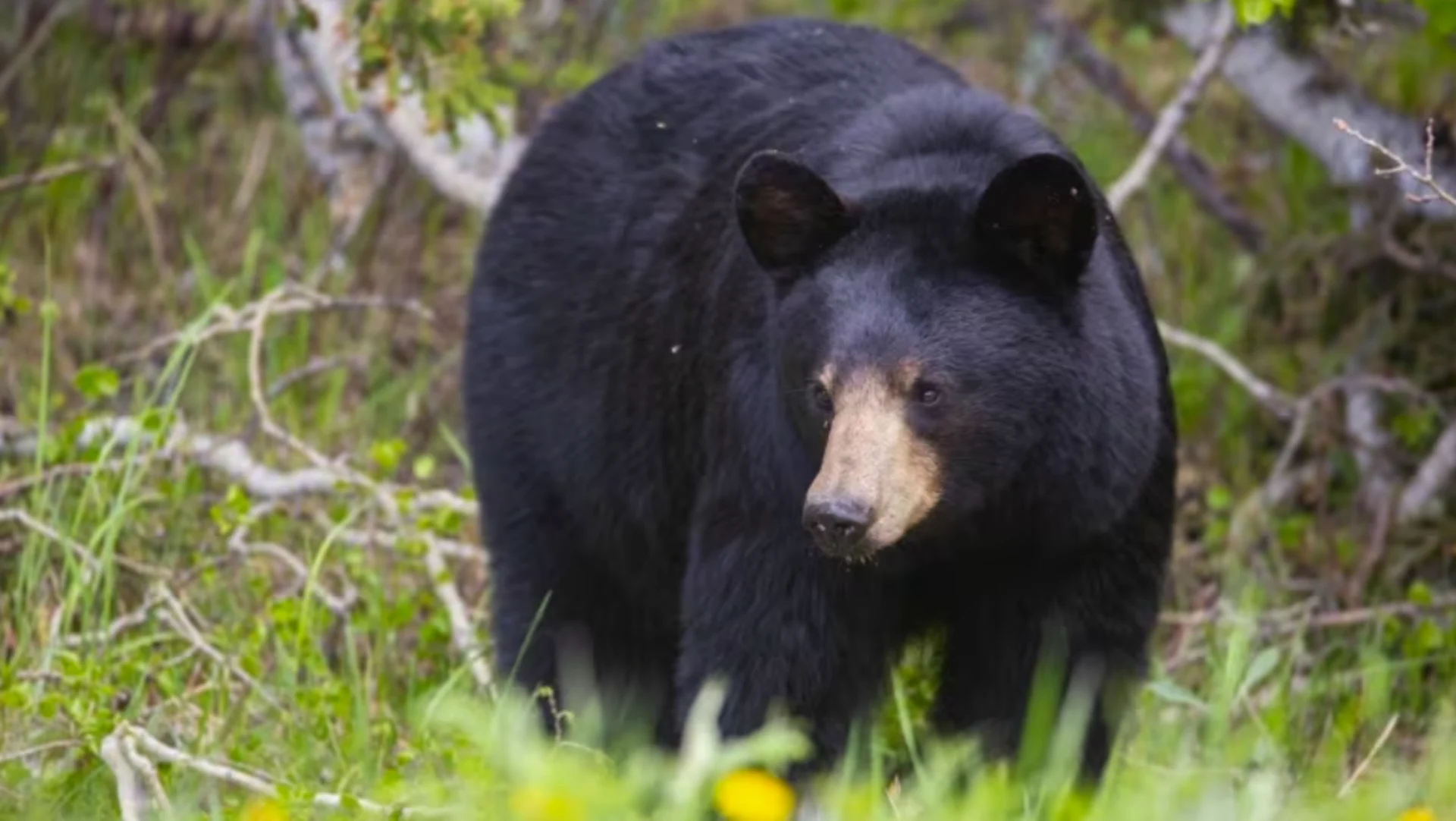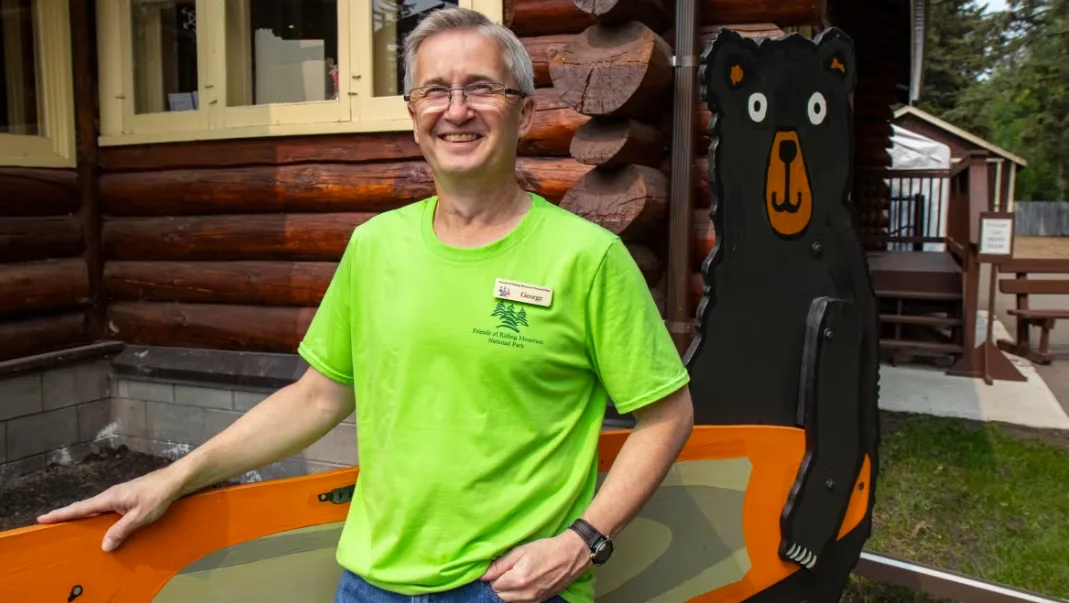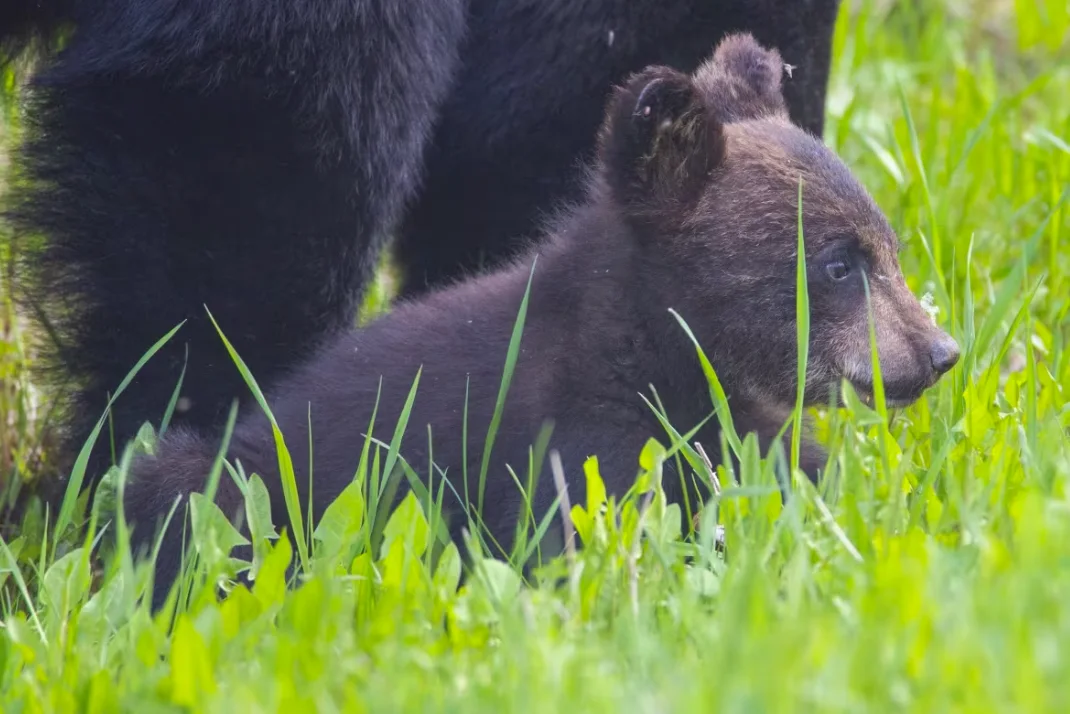
Keep your distance from bears to prevent them from getting too used to humans
Visitors to a national park in Manitoba are being asked to bear wilderness etiquette in mind when they encounter animals in their natural habitat.
It's not uncommon to see cars parked on the highway in western Manitoba's Riding Mountain National Park, filled with visitors trying to spot bears — but any presence of humans around a bear teaches the animal that people aren't scary, warns George Hartlen, the CEO of the volunteer non-profit Friends of Riding Mountain National Park.
That can lead to them becoming too comfortable around people and cars.
RELATED: Stuck in 'bear jam' traffic? Researcher studies how to keep cars moving safely
"That just results in the animals … being put in danger or the visitors being put in danger," he said.
There have also been instances where people have stopped suddenly on the highway after spotting a bear, almost causing serious accidents, Hartlen said.

Friends of Riding Mountain National Park's George Hartlen says taking pictures of a bear from your car at a distance is fine, but encouraging them to come closer is a bad idea. (Chelsea Kemp/CBC)
Bears are "out in full force" trying to get their weight back up after the winter, he said, and that means they're a common sight for visitors driving along Highway 10, which runs through the park.
"Take your photographs if you would like, but obviously don't encourage the bears to come towards the vehicles or the highways," said Hartlen.
People should also never leave their vehicles when bear spotting or use food to entice bears to come closer. In addition to being dangerous, it is illegal to feed wild animals in the national park.
Sean Frey is Riding Mountain National Park's geomatics co-ordinator — meaning he uses technology like computer mapping, satellites and drones to figure out where animals are and how they relate to the rest of the environment in the park.
The roadsides in the park "are one of the earliest places to green up with lush grasses and dandelions," he said, which attracts hungry bears coming out after hibernation.

Bear cubs sit in the grass along Highway 10 in Riding Mountain National Park. (Chelsea Kemp/CBC)
"It's a good, good chance to be able to see bears," he said, but cautions the large animals can be quick. If they bolt across a busy highway, it's not uncommon for them to be injured or killed.
Their dark colouring also makes it hard to see a bear on the move, especially at dusk or dawn.
That's why roads through the park have a reduced speed limit, Frey said.
Bears and habituation
The most common causes of bear cubs being orphaned are related to human behaviour, says Judy Stearns, who operates Black Bear Rescue Manitoba.
ALSO READ: What to do if you find an orphaned animal
That includes cubs orphaned after their mother is struck by a vehicle — one of the main reasons animals end up at the rescue, she said.
"In the end, when bears get habituated [to humans] … very often that leads to cubs being orphaned," said Stearns.
That habituation can happen when bears start snacking on bird feeders in yards or digging through unsecured garbage for food, she said.
"We want to see bears stay wild … back in the woods and away from people," Stearns said. "The bear is going to pay for the behaviour of humans in the end when they become too familiar."
Her rescue group is currently caring for six orphaned cubs and a yearling, she said.
WATCH: See how these bears react when a train suddenly invades their space
Bear numbers in the last few years have been good, Frey said, and Riding Mountain National Park is seeing quite a few cubs.
"We can't say for sure that there's … more at this point in time than in the last few years, but they certainly seem to be healthy and abundant at this point," he said.
At the same time, there have been more people using the trails to reconnect with nature, which can mean more encounters with bears.
Treating wild animals with respect and actively working to prevent habituation is key, said Frey.
Visitors are encouraged to get up-to-date information on wildlife sightings, road closures or trail closures by visiting the Friends of Riding Mountain National Park centre, the park's information centre or checking online, so they can try to avoid bear encounters.
"This is the bear's home, but they're very gracious hosts and generally try to avoid people," Frey said.
Thumbnail image courtesy of Chelsea Kemp/CBC.
This article, written by Chelsea Kemp, was originally published for CBC News.









